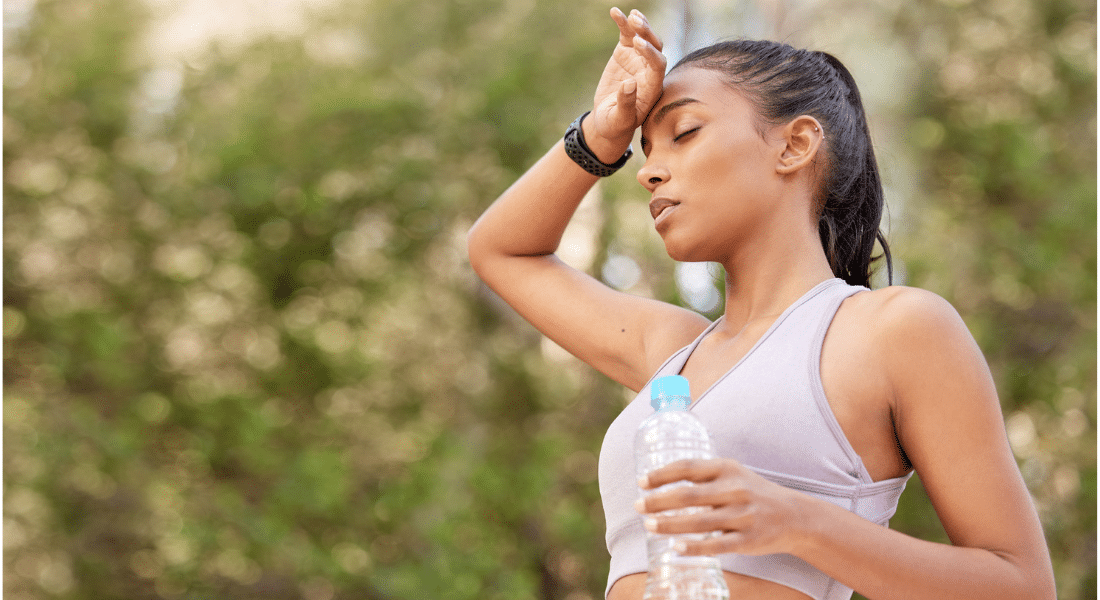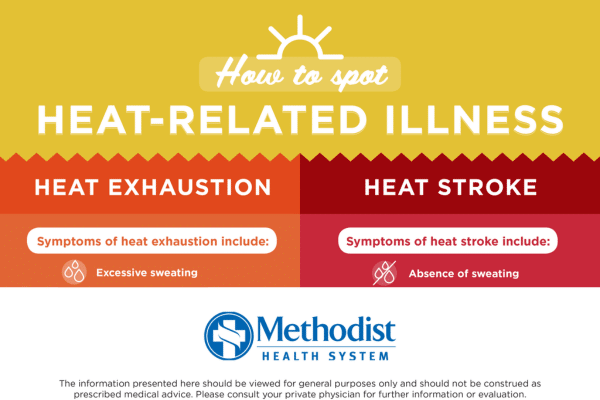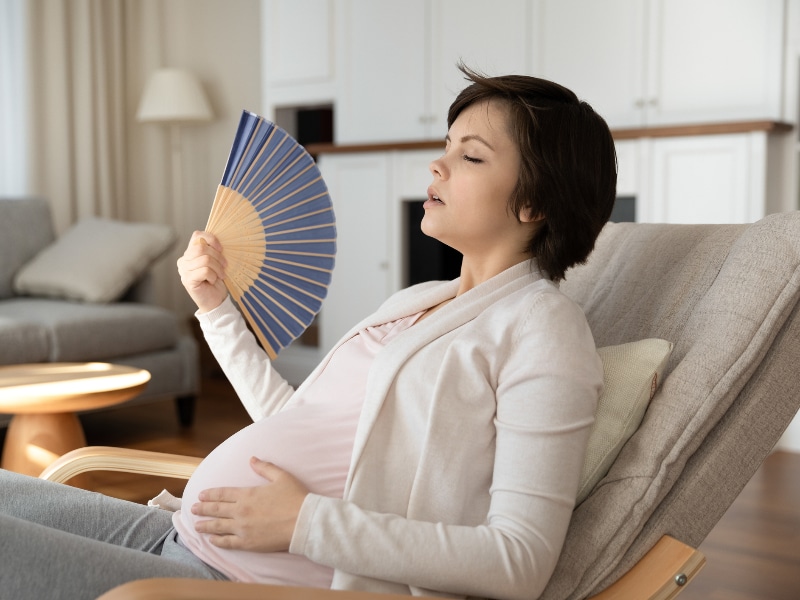Avoiding the heat may not be an option during summer in Texas, but avoiding heat illness is — even when temperatures hit the triple digits.
“Heat illness is extremely common, especially in our part of the world because of the high temperatures and humidity,” says Ketan Trivedi, MD, emergency medicine physician on the medical staff at Methodist Mansfield Medical Center. “And if people don’t recognize the symptoms, the illness will continue to progress, leading up to heatstroke.
“Heat stroke is a true medical emergency, and the patient needs to be brought to the emergency department promptly,” Dr. Trivedi adds.
Dr. Trivedi says heat exhaustion and heat stroke are often confused for each other, but there are telltale neurological signs like seizures and altered mental status. You may also stop sweating if you’re suffering from heatstroke.
“An absence of sweating is a hallmark of heat stroke,” Dr. Trivedi says. “The problem with heat stroke is that it can start affecting different organs in the body — liver, kidneys, and muscles — so people have to be evaluated appropriately.”
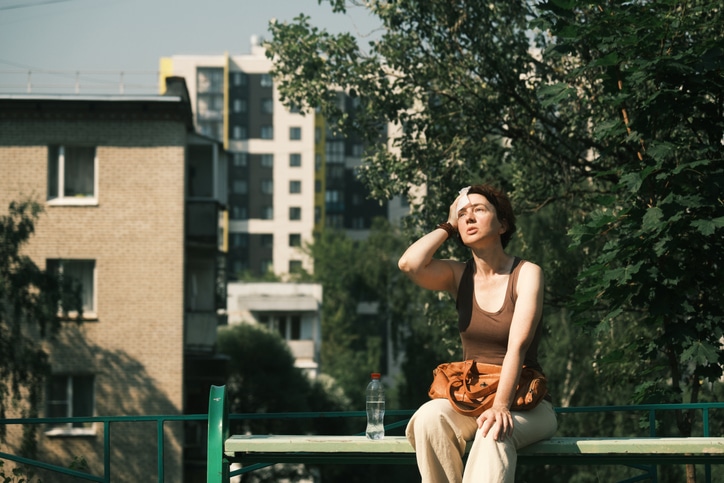
Am I too hot?
When it gets toasty outside, we start to sweat as the body is trying to regulate its temperature within a safe range. Cooling mechanisms include an increased heart rate, the familiar sweating, and flushed cheeks as more blood rises to the skin’s surface. If steps are taken to cool down at this point, symptoms will not progress into anything more serious.
If you’re lightheaded, abnormally fatigued, have muscle cramps, are feeling faint, or have a headache or tunnel vision, you’re on your way to a heat-induced illness. Stop any physical activity, get to a cool place, and start rehydrating.
Click on the image below for an at-a-glance look at the symptoms of heat exhaustion compared with heat stroke and the actions to take.
Stages of heat illness
Heat illness progresses in stages from manageable symptoms to a full-on emergency. Here’s a breakdown of those stages and the symptoms to note.
Beginning stages. These stages are characterized by heat edema, or swelling of the legs and feet. For some people, this edema then leads to heat rash.
What to do: Simply moving to the shade or air conditioning can clear up these symptoms pretty quickly.
Middle stages. As illness progresses, people experience heat cramps. You see this symptom most often with those who have been exercising in the heat. Tetany, the loss of electrolytes, also begins. Symptoms include cramping in fingers and toes as well as a tingling feeling in the face, arms, and legs.
What to do: Get inside or to a shaded area quickly to help bring down body temperature and avoid sun exposure.
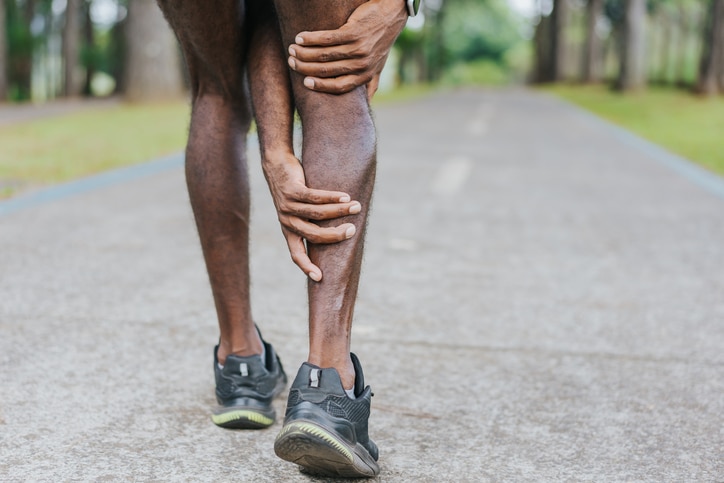
Late stages. This is where things get serious. When someone is in the heat for too long and has become dehydrated, there is a drop in blood pressure. This is dangerous because it’s when people begin fainting, which can lead to head injuries or other consequences of collapsing.
What to do: Get to a shaded or air-conditioned area quickly, and slowly begin drinking cool water — not ice cold water, as this can be a shock to the system.
The final stages. The last two stages of heat illness are the most dangerous: heat exhaustion and heat stroke. Both are caused by severe dehydration and prolonged exposure to high temperatures.
“With heat exhaustion, the body can still use the mechanisms in place to cool itself down,” Dr. Trivedi says. “The barrier between exhaustion and stroke is about 104 degrees, but the hallmark sign of heatstroke is a change in mental status.”
Heat exhaustion has most likely escalated to heatstroke when someone is not alert and very confused. The condition becomes life-threatening at this point as organ function starts to fail.
What to do: Call 911 or get to a hospital.
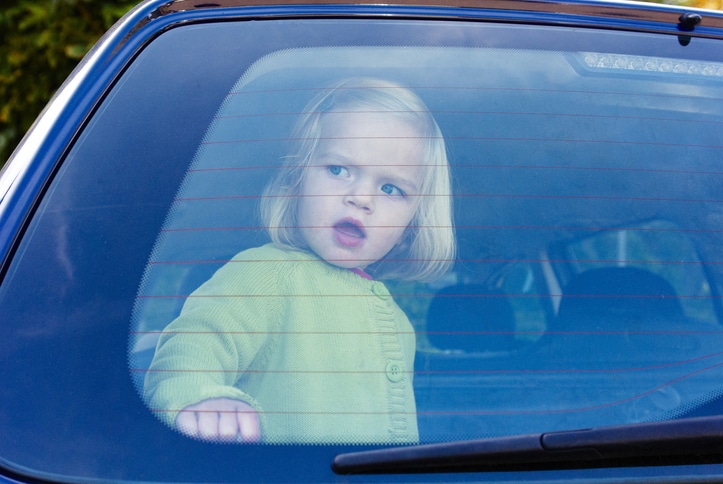
An added caution for parents
Dr. Trivedi warns that children’s bodies can’t adapt to high temperatures as well as adults can, so they will reach these final, dangerous stages of heat illness much faster than adults — in fact, in a matter of minutes. That’s why you should never leave a child or pet in a car, even when it doesn’t feel that warm outside.
“When the outside temperature is 93 degrees, inside of a car can reach 125 degrees in just 20 minutes,” he says. “Heat illness in children will develop very quickly and then progress very rapidly to heat stroke. Various organs can start to fail, causing severe illness, permanent disability, or even death.”
How to keep it cool
While there are things that you can do when heat illness starts, there are also things you can do to keep it from starting in the first place. Try these simple ways to prevent heat illness and proactively keep yourself cool:
- Drink a few glasses of water a couple of hours ahead of being outside in the heat, especially if you’re going to be doing physical activity, such as jogging or yardwork.
- While active, increase your water intake to two to four 8-ounce glasses an hour.
- In addition to water, add sports drinks with carbohydrates and electrolytes to avoid losing too much sodium, which affects kidneys and causes fatigue and weakness.
- Wear light-colored clothing that’s also lightweight.
- If you are wearing pads or another constricting uniform, take it off as soon as you start to feel overheated.
- Ice packs and iced towels are helpful. Place around the back of the neck, in the underarms, or near the groin for the fastest effect.
- Spraying a mist of cool water can also help.
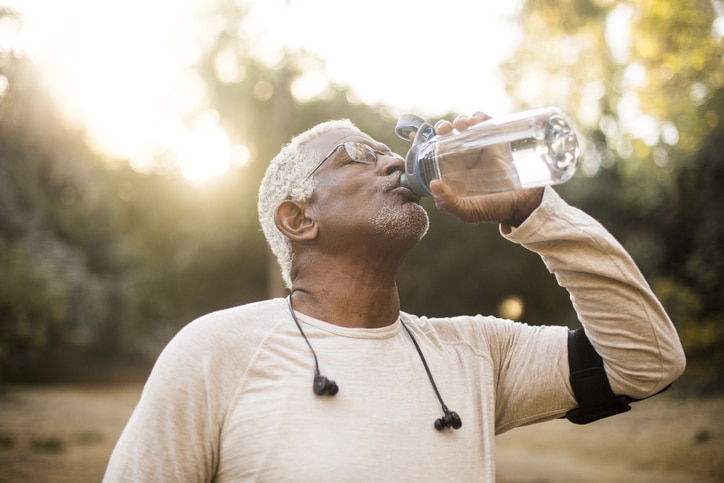 Most important, just be aware. Keep hydration in mind, and don’t try to power through dizziness. Help those around you if they start showing symptoms of heat exhaustion.
Most important, just be aware. Keep hydration in mind, and don’t try to power through dizziness. Help those around you if they start showing symptoms of heat exhaustion.
Also, remember that some people have underlying factors that put them at a higher risk for heat-related illnesses than others. These factors include genetics, physical fitness, and underlying illnesses, like heart disease.
“These underlying risk factors don’t typically change, so if you were susceptible before, you’ll still be at risk,” Dr. Trivedi says. “If you’ve already had a heat-related illness once, you want to be more careful in the future.”

